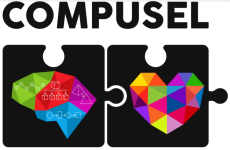SESSION 2 - SOCIAL AWARENESS
SESSION 2
OBJECTIVES
Acknowledging positive and negative aspects of socio-emotional competencies;
Developing interpersonal relationships from the social and emotional and civic perspective;
To verbalize and recognize situations in which the lack of respect and tolerance affect the development of human personality
To harness the defining elements of human values, respect and tolerance within the social space;
The capacity for self-regulation in the context of adapting to change, directing one’s behavior towards a goal.
Duration: 2x50 minutes (two sessions each lasting 50 minutes)
Purpose: Enhancing self-awareness through the development of the ability to understand other people’s emotions.
Competencies: By the end of this activity, students will be able to:
express empathic behaviors towards others
to correctly identify emotions expressed by others.
Necessary materials: worksheets (see annexes)
TITLES & CONTENT
Discover the Other
Identifying the emotions of others
The difference between feelings and external expression
Self-awareness and healthy lifestyles
TEACHING/LEARNING PROCESS
The teacher announces the title, activity and the lesson’s objectives.
The concept of empathy is explained and then the students are offered a short exercise on empathy through the method of brainstorming. ANNEX 1 – On empathy
Activity 1. Practicing empathic scenarios and the awareness of needs
(ANNEX 2: Possible situations).
Type of activity: Team activity
Stage 1. Each student will draw a sheet of paper with possible situations involving situations that require emphatic responses. Then they will discuss their designated situation in pairs. One student will read the situation, while the other will exercise an empathic dialogue regarding it.
Next, they will switch roles.
The teacher writes all of the students’ answers.
Stage 2. The teacher identifies in the students’ answers obstacles in expressing empathy. (ANNEX 3 – obstacles in expressing empathy).
Annex 4 has details and recommendations for teachers regarding how to conduct this activity.
Activity 2. Students watch a digital story. Alex is a great football player. He plays in the school’s team. During a match, in a critical moment of the game, another child pushes him to retrieve the ball. His team-mates blame him for losing the game.
Class discussion. What does it mean to be a good sportsman? What is a team? What does it mean to take up responsibilities in a team?
Decomposition
Identifying the traits of a good sportsman, as a means of understanding personality as a bio-socio-cultural system.
ANNEX 5: Image of a sportsman (an image of a child in a sport’s outfit that the children endow with the qualities of a great sportsman)
Abstraction
Discussions and questions that will enhance student awareness on the capacity for empathy and the vulnerability that empathy management entails.
Example: How would you feel if you were in ALEX’s place?
Pattern recognition
Real life experiences: The figure of Simona Halep, a well-known Romanian tennis player, with astonishing achievements in tennis. Still, across her sports career she lost games and competitions because of emotional states management (according to interviews).
Class discussion: The characteristics that the students will understand during the activity: I learn, I feel, I evolve, I interact, I think, I analyze and I reflect.
Algorithmic thinking
Association. The analysis of the types of emotions that the subject (Alex) has lived and those that the others have lived through empathy, as well as the correlation between functional emotions and their appropriate external expression. It is necessary to recognize the verbal and paraverbal message, and to correctly decode the verbal, non-verbal and paraverbal messages as well as emotions, thoughts, ideas and attitudes.
Closure: class discussion on similar situations.
Final recommendations for the teacher: reflect and ask the students what valuable things they have learned about themselves and other in the presented situations.
Make analogies, comparisons on the effects of empathic communications and on the barriers in expressing empathy and how they reflect on the development of our relations with others, on emotional expression and on self-confidence. For this purpose, film viewing or games such as SIMS can be used.
ASSESSMENT TECHNIQUES
Color the emotions (Daniel Goleman)
Fear
Disgust
Sadness
Surprise
Anger
Joy
Love
Shame
(Annex 6 – Worksheet Emotion Wheel)
